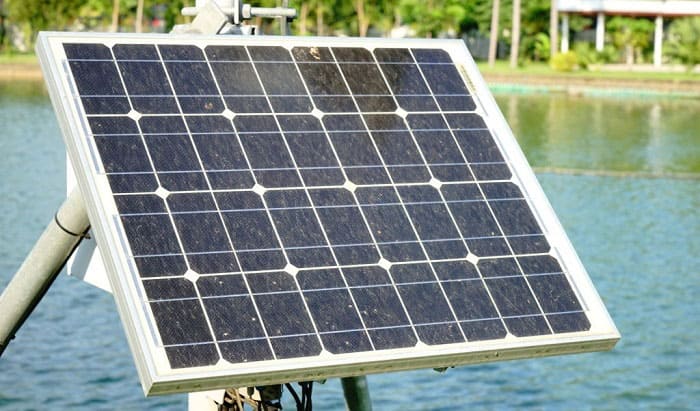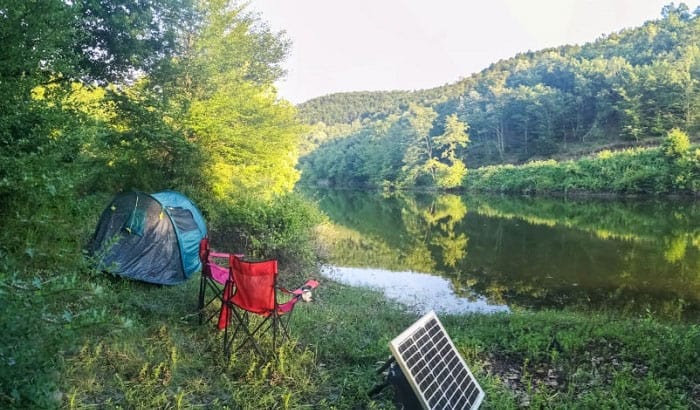If you plan to go for a solar panel for RV battery charging, you’re probably curious about this question: “How many batteries can a 100 watt solar panel charge?” To answer this question, you have to carefully examine the amp-hours of the battery you’re eyeing to buy.
Read more below!
Table of Contents
- How Many Batteries Can a 100-watt Solar Panel Charge?
- How Long Will It Take for a 100w Solar Panel to Charge a Battery?
- Is the Type of Battery You Utilize for Your Solar System an Essential Factor to Consider?
- Which Battery Is the Most Recommended for a 100w Solar Panel?
- How Many Solar Panels Are Required to Charge a 12-volt Battery?
- Final Thoughts
How Many Batteries Can a 100-watt Solar Panel Charge?
The capacity of a battery is commonly delineated in amp-hours. While the region where you live and the solar panels’ orientation can affect it, the average sun exposure is about 3 to 5 peak hours a day.
Hence, your panels will generate anywhere from 100W x 3 hours = 300 watt-hours or 100W x 5 = 500 watt-hours per day.
Ideally, a 100W panel should charge 1 battery at a time. This is because the panel’s output is limited, and adding more batteries will lengthen the charging time. If you have a 100Ah battery, it will take 12 hours to charge it with a 100W panel. Examine your battery’s amp-hours to see if your panel can power it quickly.
Meanwhile, for more details, this video about sizing solar battery banks and solar panels, plus the number of batteries and solar panels needed is worth checking out:
How Long Will It Take for a 100w Solar Panel to Charge a Battery?
When charging a 100 watt battery or other battery sizes, it’s a must to figure out the following factors:
- Solar irradiance in the region where you live. For this factor, you can refer to the four peak sun hours as the standard value if you have no idea of the solar irradiance in your area.
- You also need to figure out the capacity of your battery when it’s fully charged.
- Check out the type of charge controller you’re using. As for the most recommended charge controller, MPPT is a better option since it works more efficiently.
- It’s essential to determine the depth of discharge in a usual operation.
In general, a regular size 12-volt 50ah battery with a 20 percent discharge requires at least two hours of charging using a 100W solar panel. Meanwhile, a 12-volt lead-acid deep-cycle 50 ah battery with 50 percent discharge will take approximately four hours to fully charge using a 100W solar panel.
Please note that the examples we used are based on a solar panel’s current output amounting to 5.75 amps, utilizing an MPPT charge controller.
Is the Type of Battery You Utilize for Your Solar System an Essential Factor to Consider?
Yes. The type of battery you use can significantly affect the way your solar system setup works. The good news is that you can select from the different types of deep cycle batteries for your solar setup. Your best options include sealed lead-acid, flooded lead-acid, and lithium iron phosphate batteries.
It’s worth noting that the three main types of batteries have different cycle life, price range, voltage, and capacity. Hence, you have to look into these factors as well when getting a deep cycle battery. Fundamentally, you need to inspect the battery capacity because this feature gauges how much power you can store.
Indeed, if you intend to run some appliances for an extended period, a battery with a bigger capacity is required to handle an enormous load. Examine the battery’s cycle life to determine the charge cycles and the number of discharges it can supply before its capacity falls.
Which Battery Is the Most Recommended for a 100w Solar Panel?
Lithium-ion batteries are deemed the most excellent battery for buyers who plan to have an off-grid solar system. Among the types of deep cycle batteries, they are slightly pricier. Even so, a 100 watt lithium battery is a worthwhile investment. To unveil what makes lithium-ion batteries better options, let’s compare them to other batteries.
Lithium-ion
This battery is pretty compact, and is more lightweight than a lead-acid battery. It also comes with a higher DoD rating and can last for an extended period.
Lead-acid
This type of battery is a common alternative for off-grid setups since it’s comparatively less expensive and requires low maintenance. However, they come in a lower DoD rating, have a shorter lifespan, and are heavier than a lithium-ion battery.
A lead-acid battery is an ideal option for people who love camping and RVing.
Gel
This option is more costly than a lead-acid battery since it has a distinct chemical composition and does not require complete maintenance. The downside is that it’s more likely to be affected by temperature changes among the other battery types.
How Many Solar Panels Are Required to Charge a 12-volt Battery?
Let’s have this example:
You have a 12-volt solar panel system installed, and you’re required to supply 100 ah of charge to your batteries per day. Let’s assume that you have eight sun peak hours in your region a day. This means that you’ll require 1,200 watt-hour.
So, if we divide 1,200 watt-hours by 8 hours, we get 150-watts solar panel(s). Solar experts recommend overrating your requirements by a minimum of 20 percent; thus, you’ll require 180-watts of solar panels.
Final Thoughts
A 100-watt solar panel is a practical choice for buyers with insufficient roof space and minimal energy requirements. Consider installing it with a top-quality battery bank that has an excellent capacity. This way, you can efficiently store more power than necessary if any unfortunate incidents emerge.
How many batteries can a 100 watt solar panel charge? As discussed, you need to examine the capacity or amp-hours of the battery first to answer this question. Furthermore, you also have to consider the other factors when charging your batteries, such as:
- Solar irradiance in your region and your battery’s capacity when fully charged
- The type of charge controller you use and the DoD in a usual operation.

As the founder of the Avasolar team, I aspire to solve the problems for households in selecting, installing, and utilizing solar mechanical devices.



